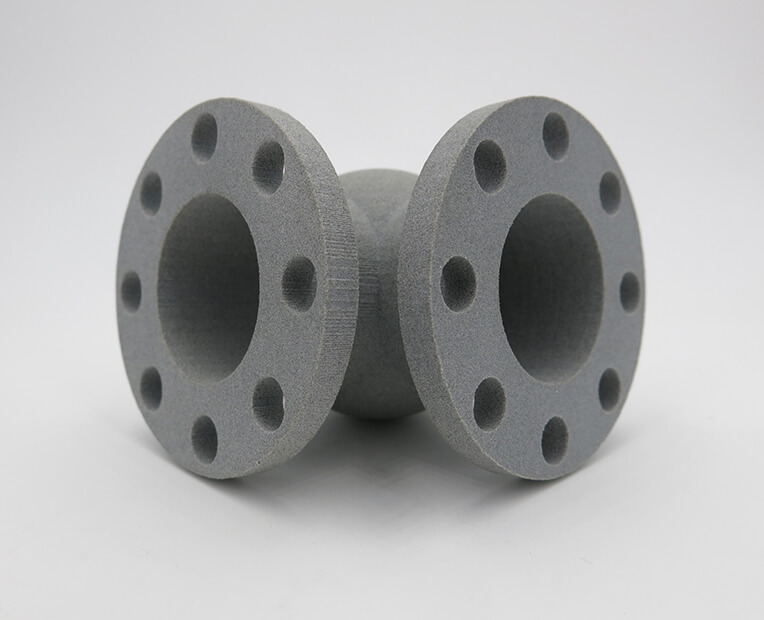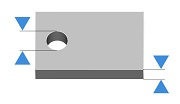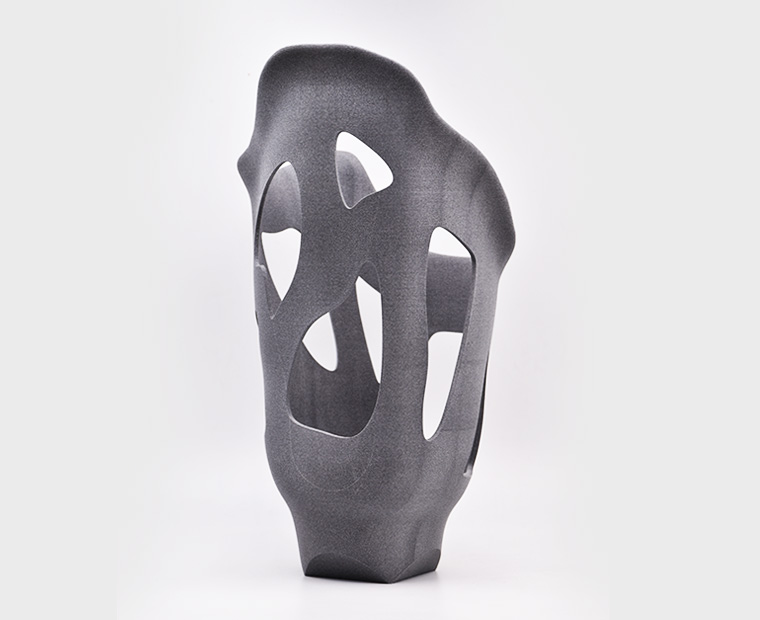Home » Los Materiales de Impresión 3D » Tecnología SLS para Impresión 3D » Nylon PA12 (Gris)
Nylon PA12 (gris)
Toda la información, consejos y trucos para una impresión 3D exitosa, en Nylon PA12 (gris)
Colores
Acabados
Caracteristicas
Guia de material - Nylon PA12 (gris)
Descripción
Los objetos imprimidos con Sculpteo del material Nylon gris PA12 (plástico gris) se crean a partir de un fino polvo gris de poliamida, mejor conocido como nylon. El material es al mismo tiempo sólido y flexible, a diferencia de otros materiales que ofrece Sculpteo. El nylon gris PA12 (plástico gris) es ideal tanto para profesionales como diseñadores novatos, debido a su alta precisión y bajo coste. Sin pulir, el material es gris, granular y algo poroso: estos tipos de material se pueden refinar con diferentes procesos de Sculpteo para pulido en casa. Además, también puede pulir y pintar sus objetos en casa con técnicas específicas para cada material. Para saber más, consulte el párrafo dedicado a los acabados y colores para modelos de poliamida.
Aplicaciones
El material poliamida gris (grey polyamide) ofrece una flexibilidad excepcional en la impresión en 3D, sobre todo de modelos complejos, debido a su flexibilidad y durabilidad. Consecuentemente, los objetos de este material tienen un amplio uso, desde el mecánico (prototipos, sistemas de engranaje, objetos articulados etc.), ornamental o incluso educacional (modelos de huesos, etc.).
Las propiedades técnicas de la poliamida gris pueden variar dependiendo del grosor de su modelo. Con un grosor de 0,8 mm, su modelo será flexible, mientras que con más de 2 mm de grosor, se volverá rígido.
En cuanto a su comportamiento en el agua, la poliamida gris es resistente al agua pero no es impermeable. Por ello, los objetos 3D no deben de estar en contacto con agua por períodos extendidos de tiempo. Con respecto a la temperatura, al sumergir el objeto en agua con una temperatura mayor a los 120°C (248°F), es probable que su forma cambie considerablemente.
La superficie algo áspera de los objetos hechos de poliamida gris pueden atraer polvo. Esto se puede solucionar con algo de agua con detergente y un pañuelo, dejando que se seque completamente. Los objetos se colorean en su totalidad, lo cual hace que sean extremadamente resistentes a las rayas y a la abrasión.
Tiempo de proceso y precio
El precio de la impresión de su diseño se calcula automáticamente al subirlo en línea. Al modificar su objeto (el tamaño, usando las herramientas de control por lotes o de ahuecamiento), verá que los precios se actualizan automáticamente. Para determinar el precio, nos basamos en diferentes factores como: el volumen total, el tamaño del objeto y el cuadro delimitador, entre otros.
Técnicas de impresión
Una vez que suba su modelo 3D en nuestro sitio web , lo recibe un miembro del equipo de Sculpteo, que de forma experta coloca el modelo en el siguiente lote disponible. La impresora específica desde la cual se imprimirá estará determinada principalmente por las dimensiones de su objeto o lote, reservándose las impresiones mayores para las impresoras más grandes. Tenemos varias impresoras disponibles, que incluyen: EOS Formiga P100, P110, P395, P396 y P730.
SLS usa un láser altamente específico que sinteriza capas delgadas de polvo de poliamida negra, una de cada vez. Después de cada ronda de láser, se baja el lecho de impresión y se distribuye uniformemente otra capa de polvo de poliamida negra en la parte superior para otra ronda de sinterización. Este proceso se repite con capas de una altura de 100 μm hasta que se completa el objeto.
Acabados
Hay múltiples opciones de colores y acabados disponibles en Sculpteo.
Opciones de acabado:
Bruto: arenado, pero no pulido, la superficie permanece bastante áspera, más económico.
Pulido: pulido con pulidora mecánica, más suave al tacto, las capas son bastante visibles en los objetos redondeados.
Espesor de capa: 100 µm Precisión: ± 0.45% (minimum de ± 0.45 mm)
Nuestras impresoras 3D de Nylon PA 12 nos dan una precisión de capa de 100 µm (0.10mm). | |
| Tamaño máximo sin pulido | 190 x 240 x 315 mm |
| Tamaño máximo pulido | 190 x 240 x 315 mm x+y+z ≤ 540 mm |
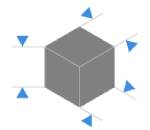
El tamaño máximo de sus modelos está limitado por el tamaño físico de nuestras impresoras 3D – no se puede imprimir nada que sea más grande que la cama de impresión -, de nuestra pulidora mecánica y de los baños de tinte.
Su objeto debe también respetar las dimensiones mínimas de la impresión 3D en alumide (explicadas a continuación).
| Espesor mínimo de pared (flexible) | 0.8mm
|
| Espesor mínimo de la pared (rígido) | 2mm
|
| Espesor de pared mínimo de elementos contenidos | 0.8mm with support
|
| Espesor mínimo de pared para aspectos de diseño particulares | 1-2mm |
Las paredes de su diseño deben adherirse a un grosor mínimo de 0.8 mm para garantizar que la estructura no se rompa. Si las paredes de su modelo tienen menos de 0.8 mm, puede agregar una estructura de soporte para mantener la estabilidad.
Un elemento contenido es un aspecto de diseño que es al menos el doble de largo que de ancho. Para los elementos o elementos integrados de diseño no soportados y con una limitación de diseño particular, también es importante respetar un espesor mínimo de 1 mm para garantizar que el objeto no se rompa.
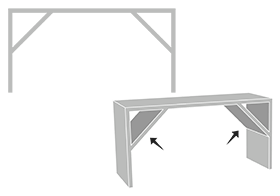
Añada una estructura de soporte para mantener la estabilidad. Por ejemplo, si está modelando un busto de una persona, puede añadir aspectos finos de diseño como las orejas en más lugares alrededor de la cabeza del modelo. Hacer esto evitará elementos en voladizo y fácilmente rompibles en la impresión final.
Con un espesor de pared de 0,8 su diseño será ligeramente flexible. Para obtener más rigidez, le aconsejamos elegir un espesor de pared de 2 mm.
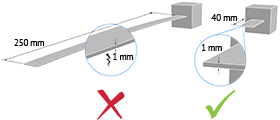
Las paredes delgadas que soportan modelos de plástico grandes y pesados pueden deformarse bajo el peso de las mismas.
Sculpteo ofrece una herramienta de comprobación de solidez en línea que destaca partes de la impresión que pueden ser demasiado finas para una impresión. A partir de ahí usted es capaz de ajustar su diseño con el fin de crear un objeto que es un espesor adecuado. Para utilizarlo, sólo tiene que cargar su archivo 3D , seleccione su material y haga clic en la pestaña “Verificación”.
También es importante tener en cuenta que el objeto debe ser impreso en la vida real. Por lo tanto, si un aspecto delgado está soportando algo que es demasiado pesado para él, puede romperse, aunque es posible dentro de la física proporcionada por su software de modelado 3D. Recomendamos agregar un poco de grosor a los lugares que obtendrán un montón de manipulación, o que soporten más peso.
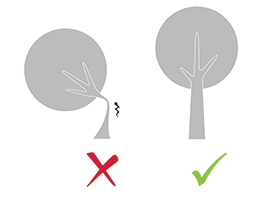
Recuerde que nuestra herramienta de control de solidez no detecta aberraciones físicas como partes flotantes, posiciones inestables, partes que soporten demasiado peso en relación a su espesor, etc… Debe tenerse especial cuidado con la geometría de nuestro diseño y dar más espesor a las partes con más tensión.
| Tamaño mínimo de los detalles | 0.3 mm |
| Detalles mínimos de altura y anchura | Grabado en relieve : 0.4 mm
|
| Tamaño mínimo de texto | 0.5mm |
| Ratio de ampliación | 1/1
|

Una mínima precisión del detalle viene determinada principalmente por la resolución de nuestras impresoras. Sin embargo, durante el proceso de limpieza, puede perderse alguna fina capa de detalle. Para que los detalles y textos sean visibles, recomendamos seguir nuestros mínimos de tamaño lo más posible.
Es posible que los relieves y los grabados particularmente finos no sean visibles, pues la talla podría llenarse con un exceso de polvo que después no se podría eliminar. Si un repujado o un grabado es una parte esencial de su diseño, le recomendamos que lo haga lo más profundo posible. Para asegurar una mejor eliminación del polvo (y, por tanto, mejor precisión de detalle), el ancho de nuestros detalles debe ser, al menos, tan grande como profundo.
| ¿Partes cerradas? | Sí |
| ¿Partes entrelazadas? | Sí |

Nuestro Nylon PA12 tiene la habilidad de ser impreso en algunos diseños complejos. Un ejemplo de un diseño complejo es un volumen encerrado dentro de otro volumen, como una cadena o maraca. Nuestras impresoras 3D de Nylon PA 12 tienen la capacidad de imprimir un objeto totalmente entrelazado fuera de la impresora, sin soportes de estructura que eliminar.
| Distancia mínima entre paredes fijas | 0.5 mm |
| Separación mínima entre partes | 0.5 mm |

Para una buena impresión 3D se requiere una mínima separación entre los objetos, que permita que el exceso de material sea eliminado al arenarlo. Si no se deja este espacio en el diseño, el objeto será un sólido. Esto es particularmente importante en objetos articulados – el espacio entre las paredes definirá la capacidad de movimiento del objeto.
La separación debe ser de, al menos, 0.5 mm y depende del tamaño de su objeto. Para tamaños grandes, la separación debe ser mayor. La zona caliente de su objeto depende del tamaño, cuanto mayor sea el objeto más tiempo estará expuesto a altas temperaturas: si el espacio entre las paredes es demasiado pequeño se soldará al propagarse el calor. En algunos casos, deberían añadirse agujeros que nos permitan drenar el exceso de material en polvo dentro del espacio libre.
La separación debe ser de, al menos, 0.5 mm y depende del tamaño de su objeto. Para tamaños grandes, la separación debe ser mayor. La zona caliente de su objeto depende del tamaño, cuanto mayor sea el objeto más tiempo estará expuesto a altas temperaturas: si el espacio entre las paredes es demasiado pequeño se soldará al propagarse el calor.
| ¿Montaje? | Sí |
| Espacio mínimo | 0.5 mm |

Los objetos impresos en PA12 (gris) pueden imprimirse para ser montados, mientras se dejen, al menos, 0.5 mm entre las partes del objeto.
| ¿Vaciado? | Sí |

Nuestra herramienta online de optimización del vaciado permite reducir el precio de una impresión reduciendo la cantidad de material utilizado.
Utilizar la herramienta requiere añadir dos agujeros en su modelo, que servirán de drenaje para el exceso de material en polvo de dentro del objeto. El tamaño mínimo de estos agujeros se indica en nuestra página web. Si no, es posible vaciar su objeto manualmente, en su programa de diseño 3D.
| ¿Ficheros con múltiples objetos? | No |

No es posible imprimir en 3D un fichero que contenga varios objetos con Nylon PA12.
¿Listo para imprimir en 3D con Nylon PA12 (gris)?
Con el servicio de impresión 3D en línea de Sculpteo, está a solo unos clics de la impresión 3D profesional de Nylon PA12 (gris). Su modelo 3D se imprime con la maxima calidad y se entrega directamente a su puerta.
¡Empieza ahora!


 Conéctate con Google
Conéctate con Google Conéctate con Facebook
Conéctate con Facebook
